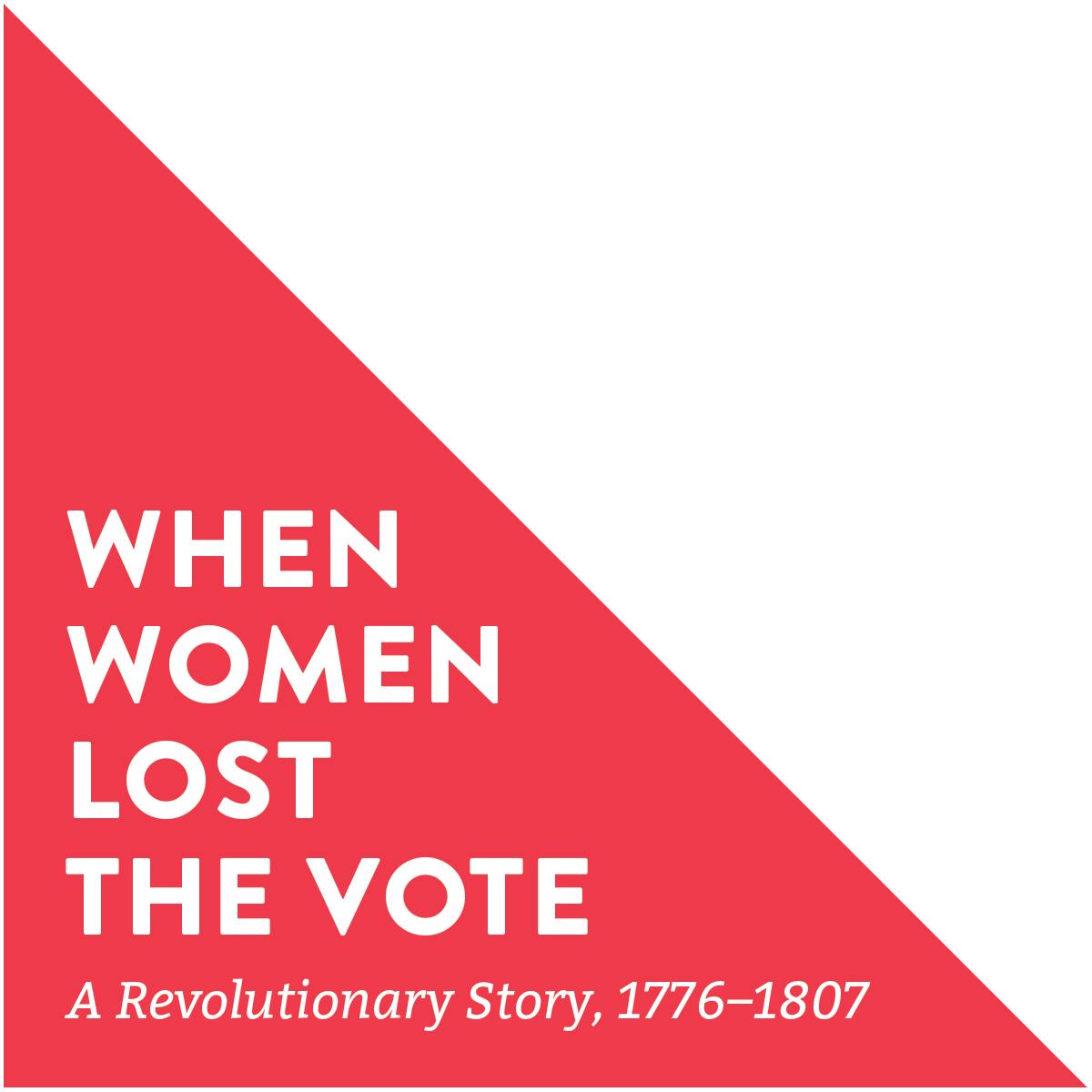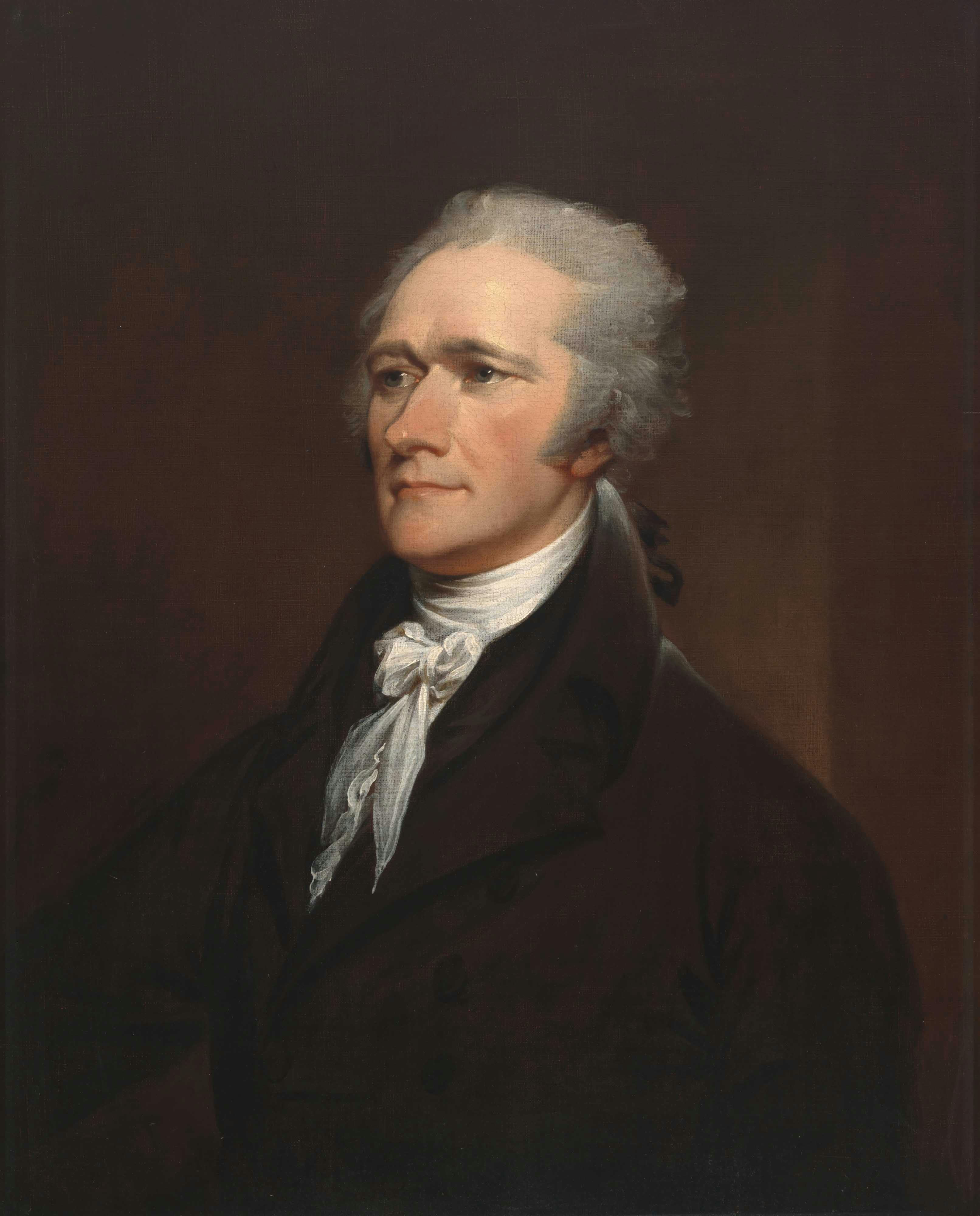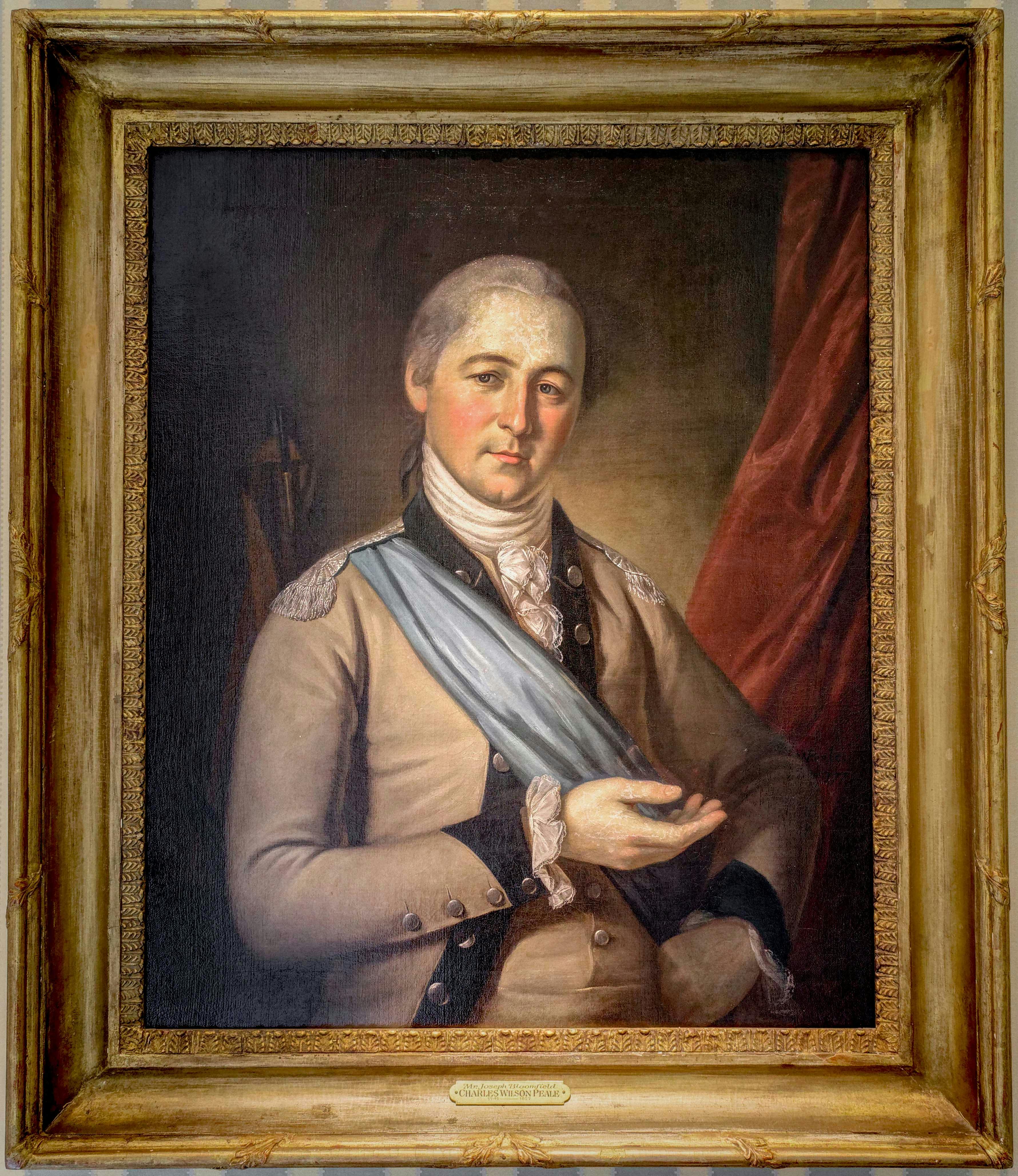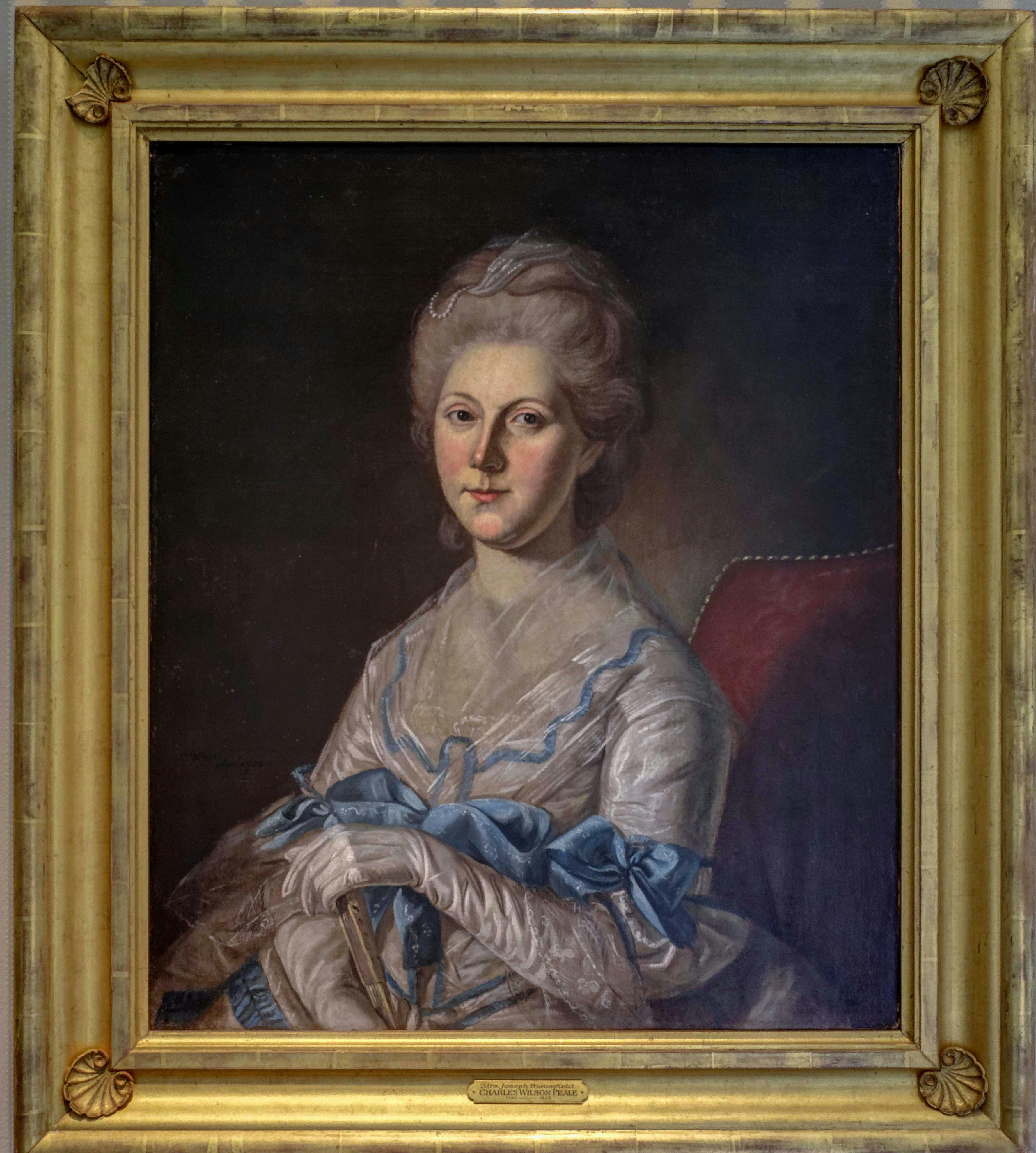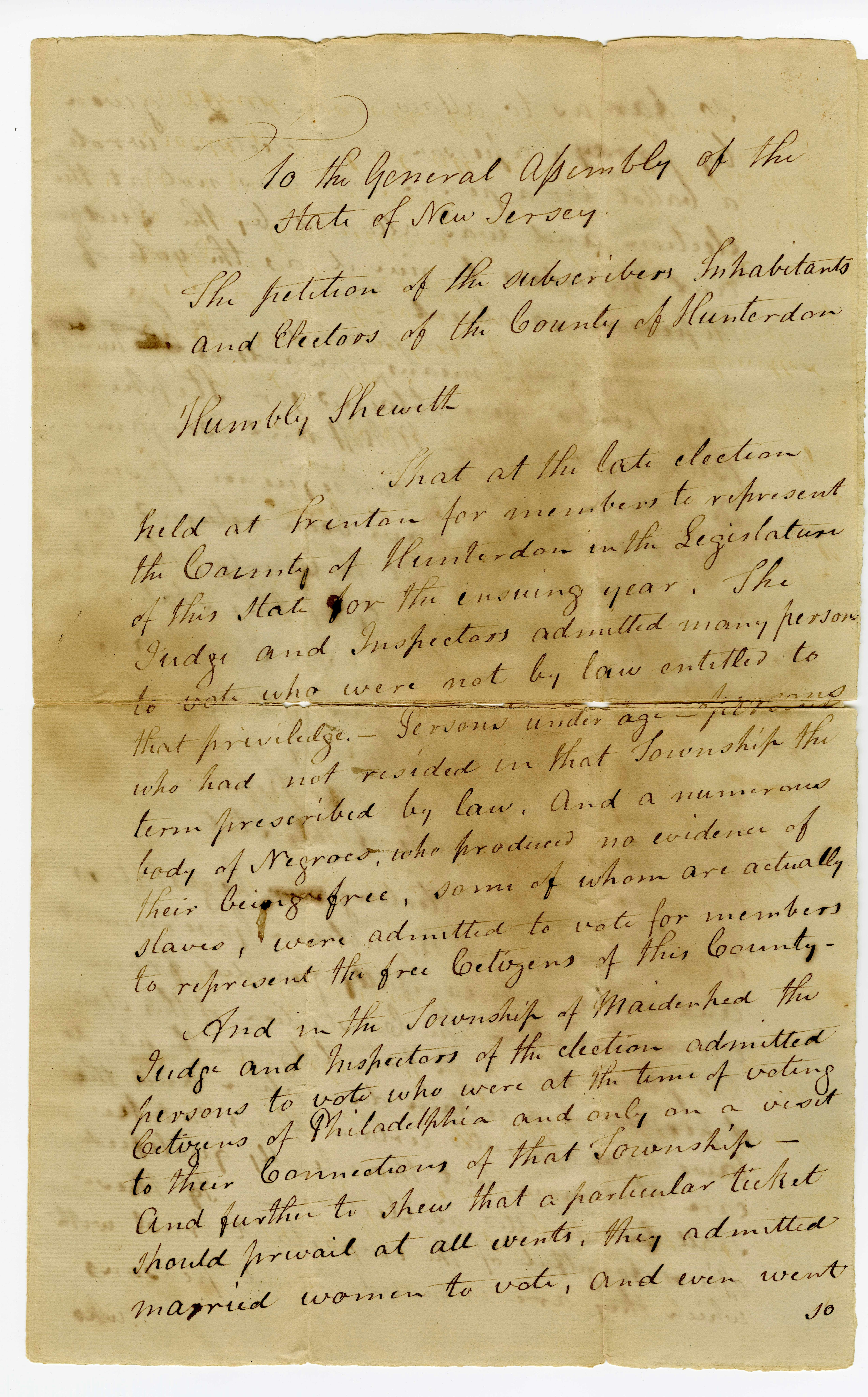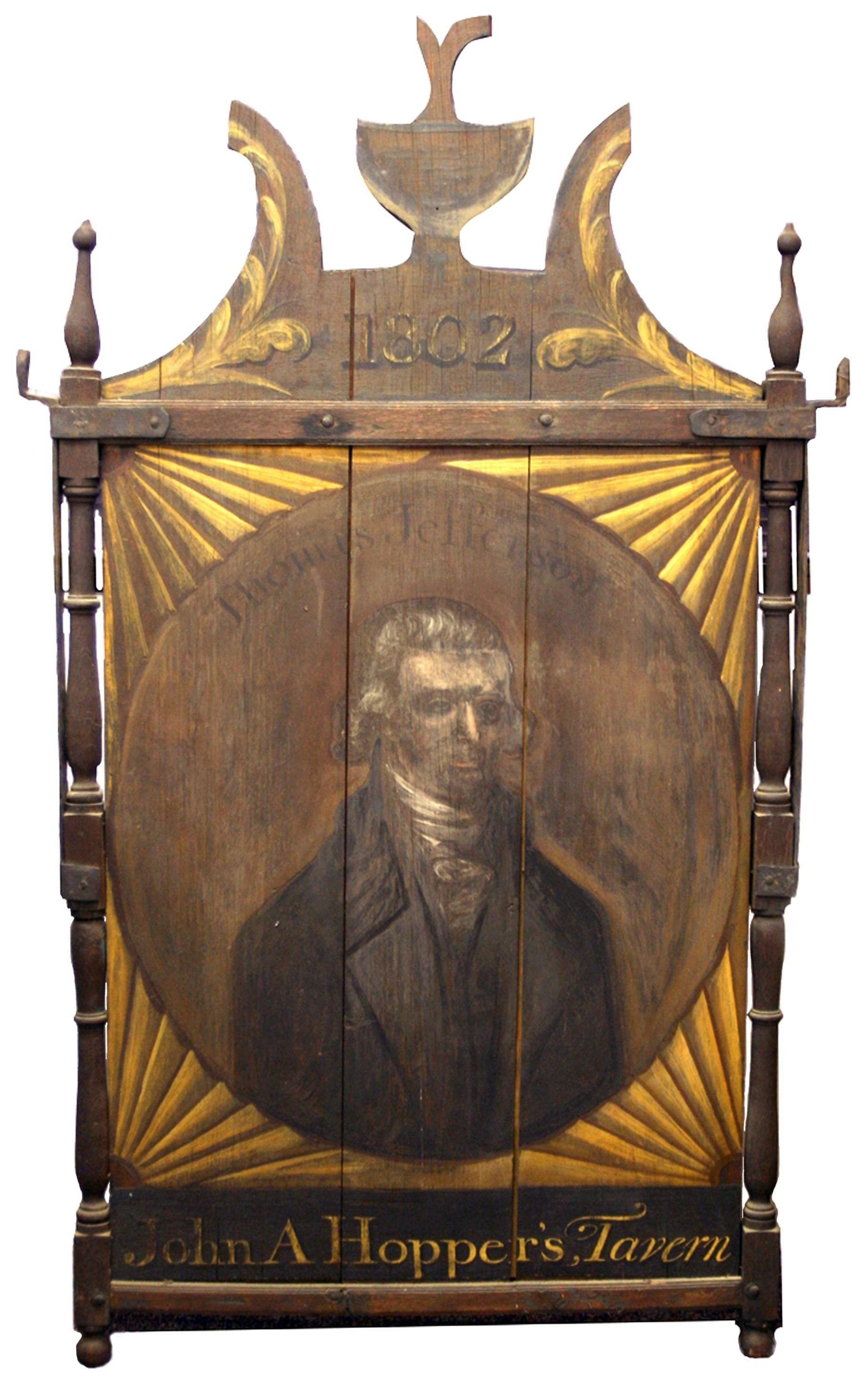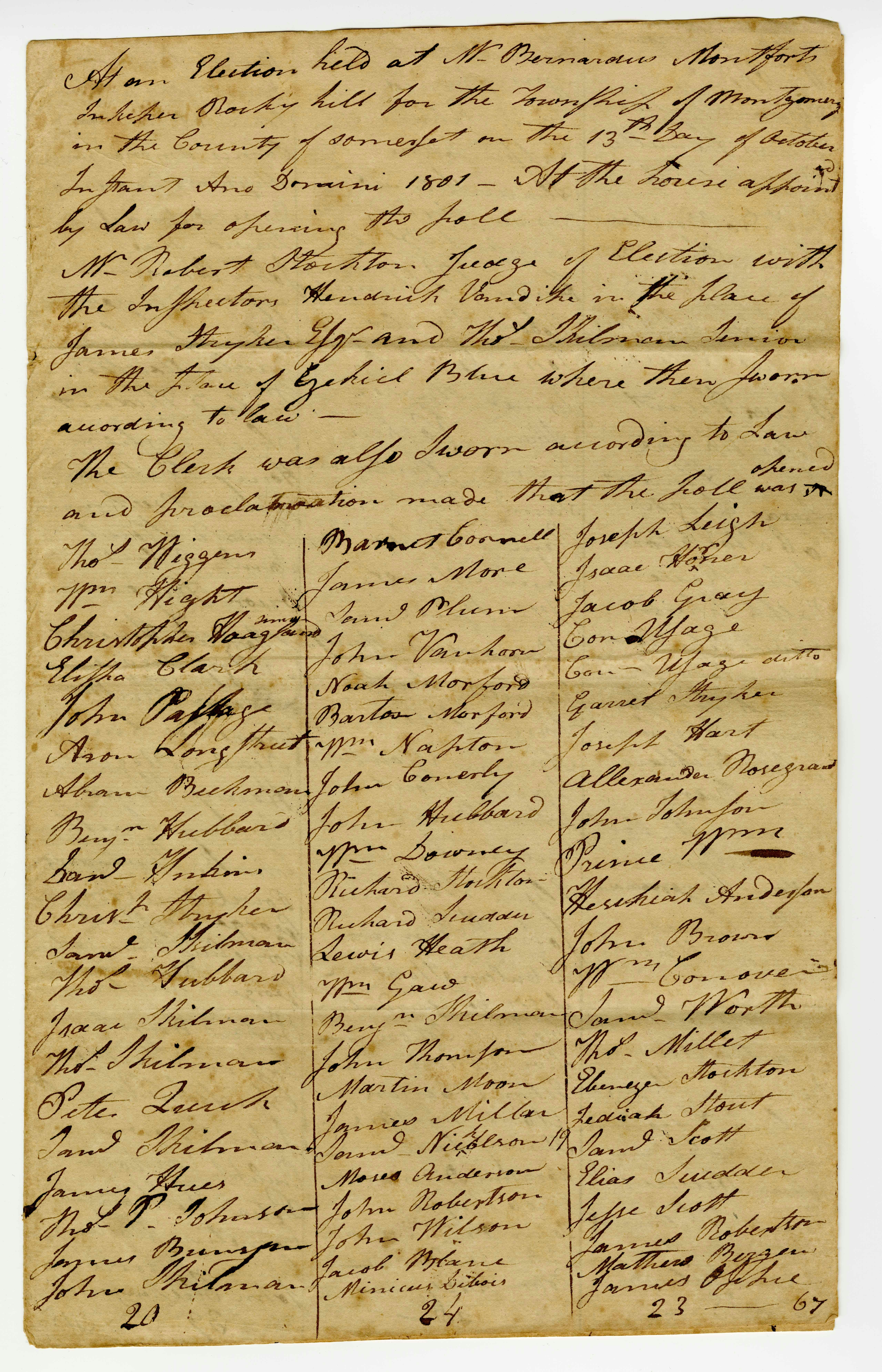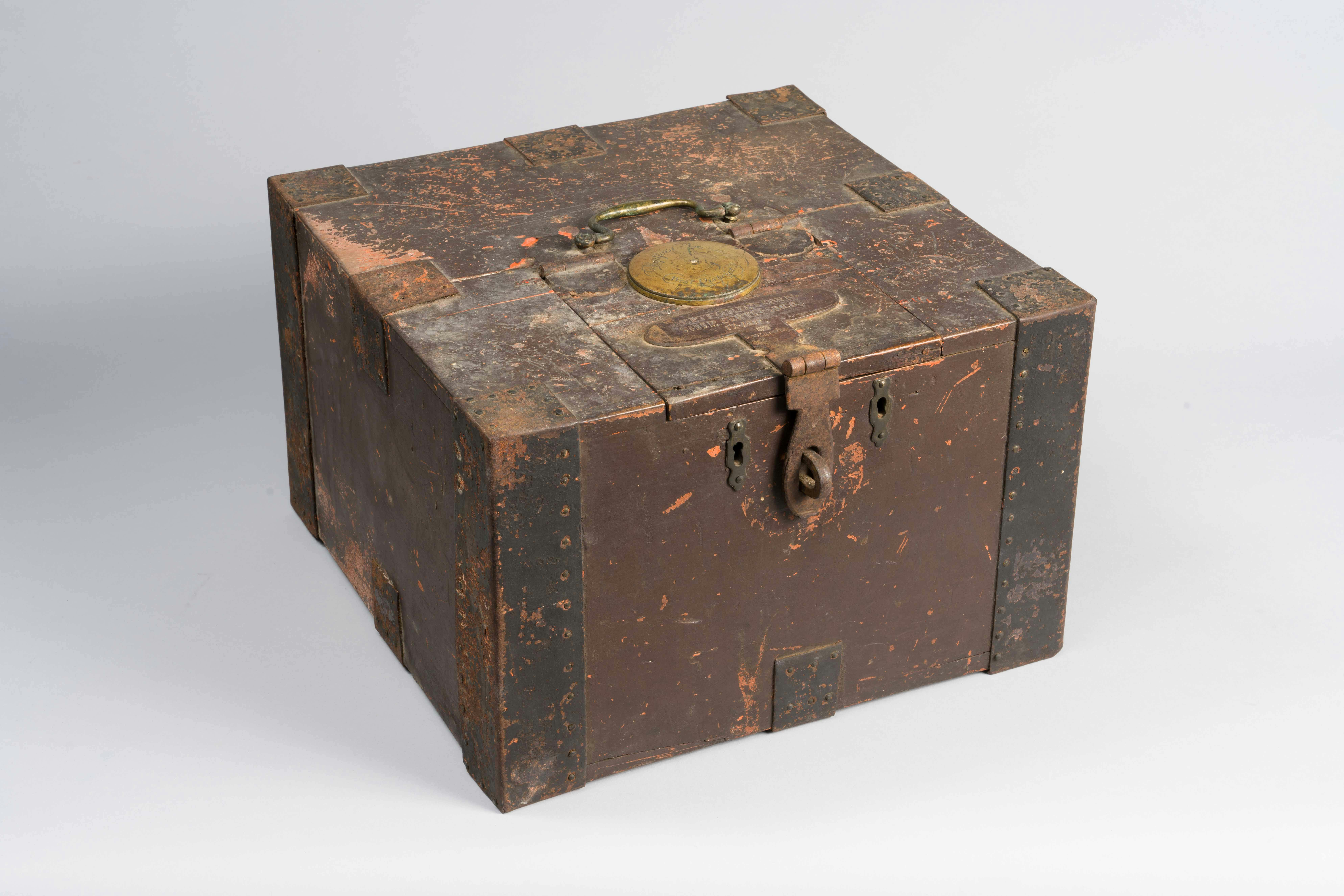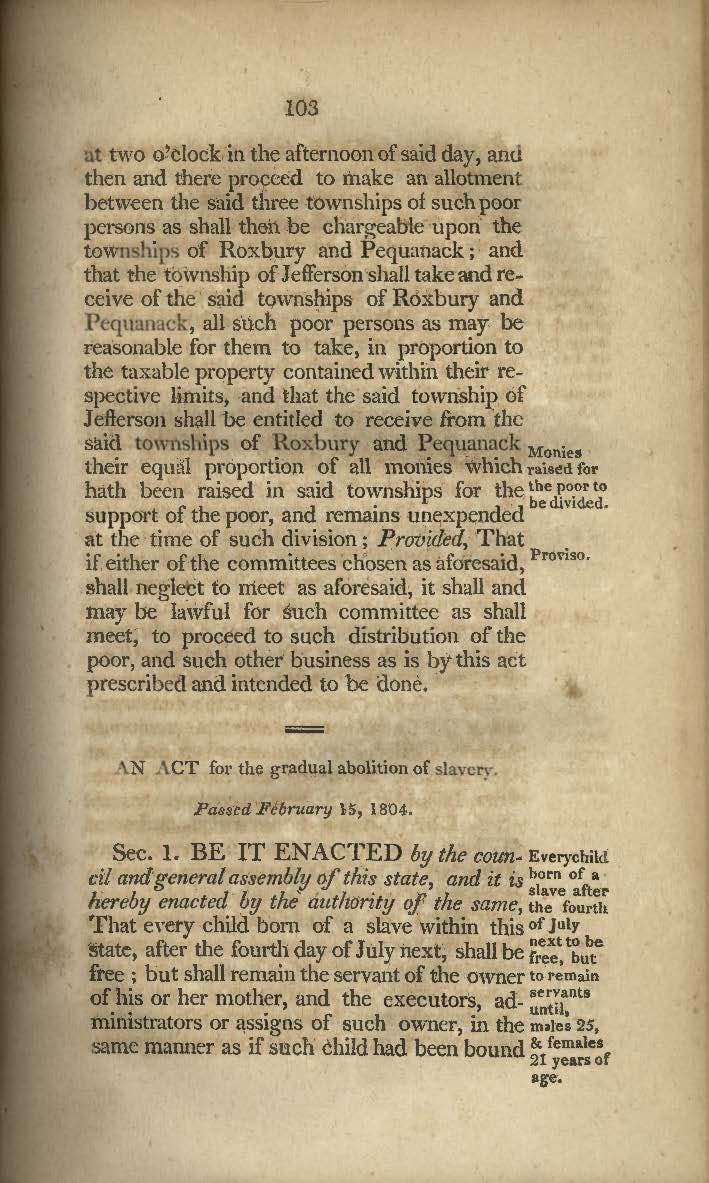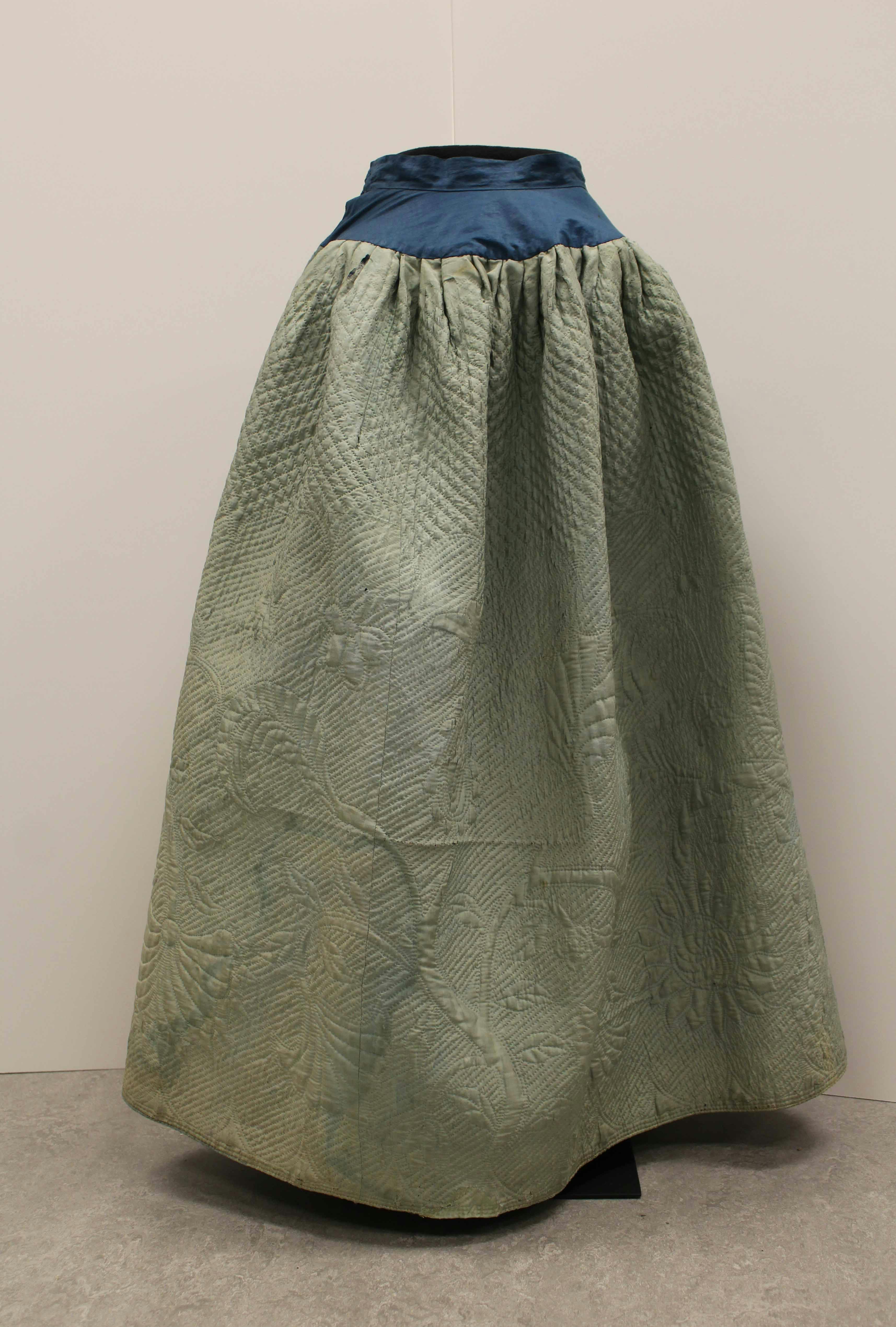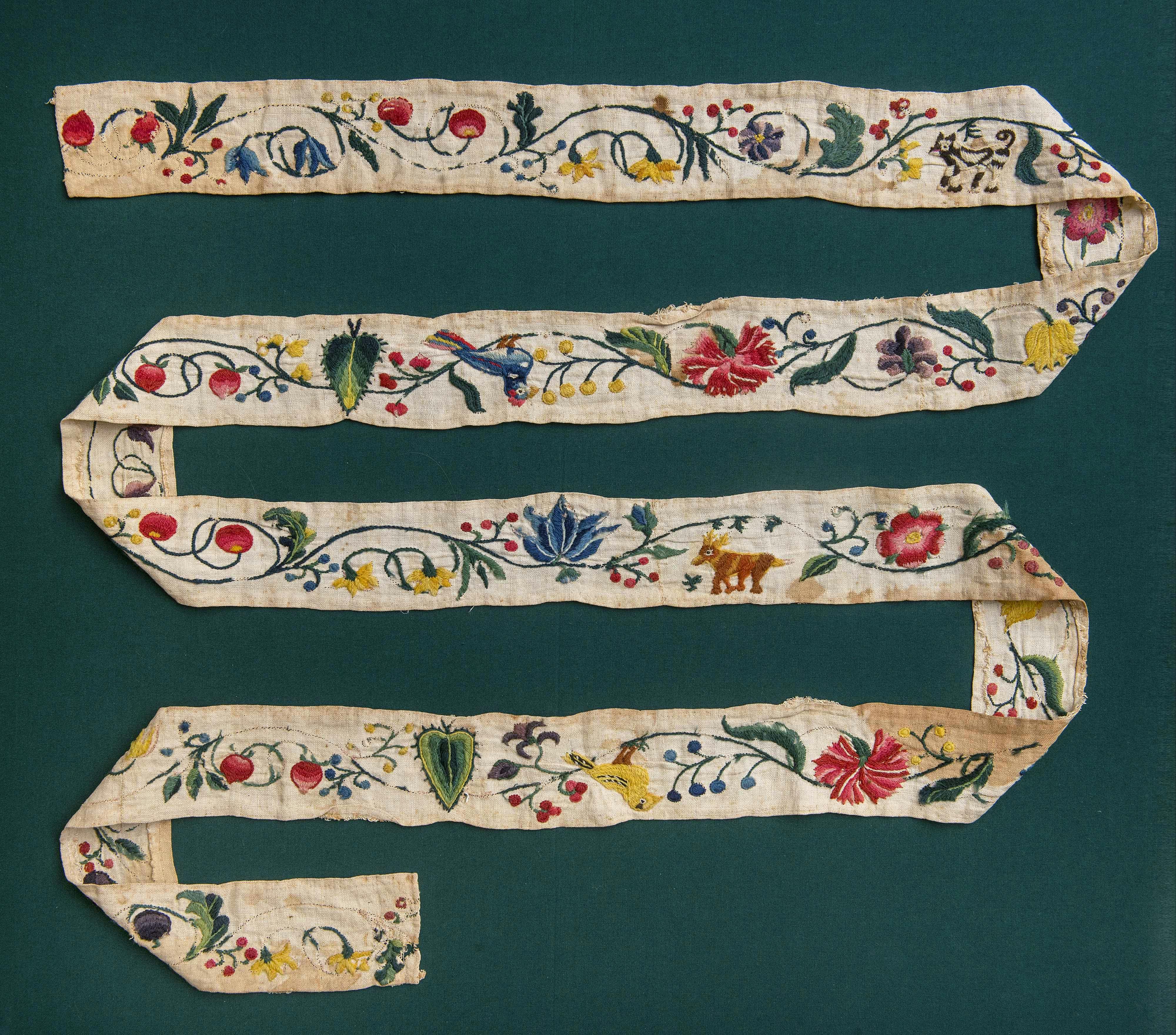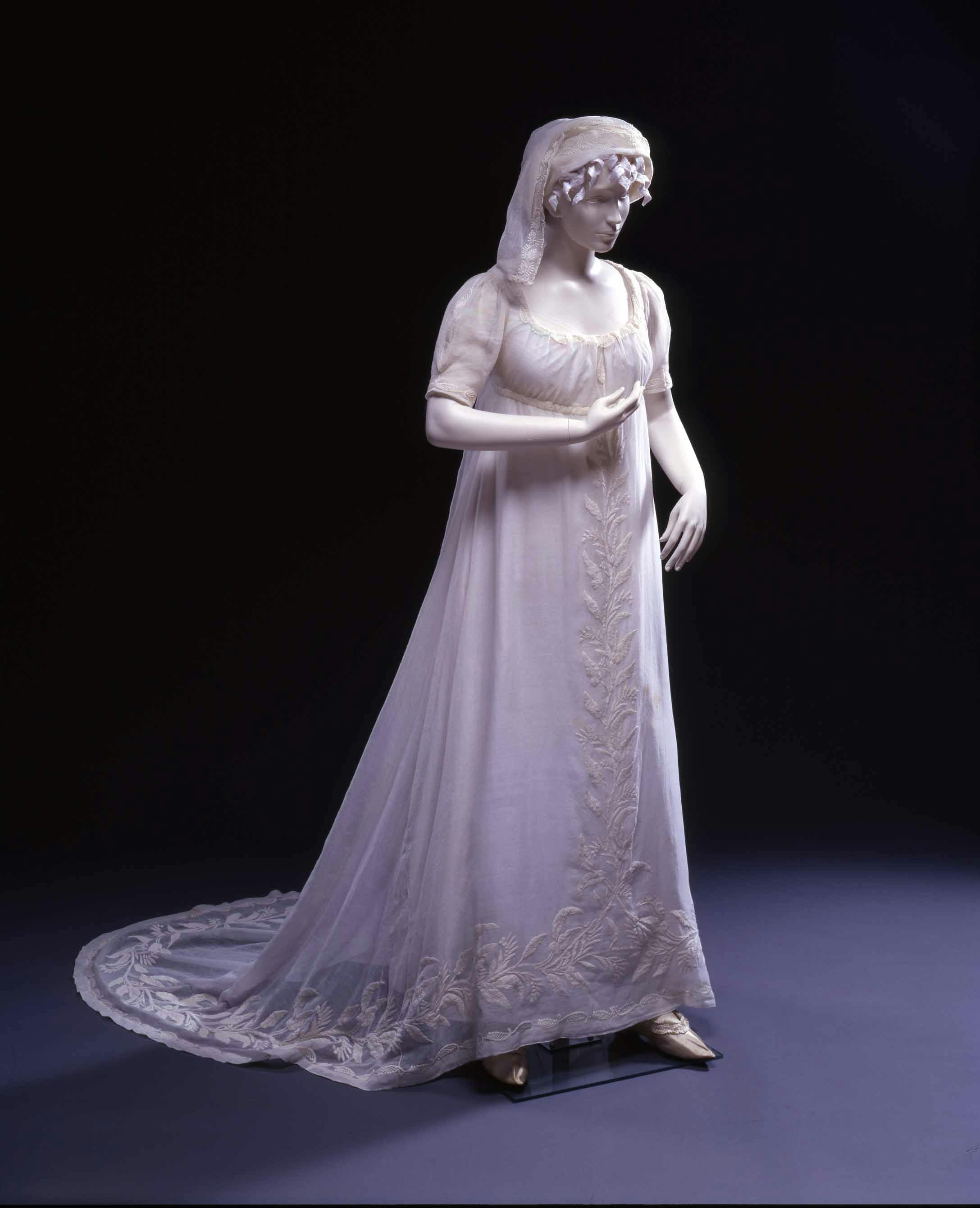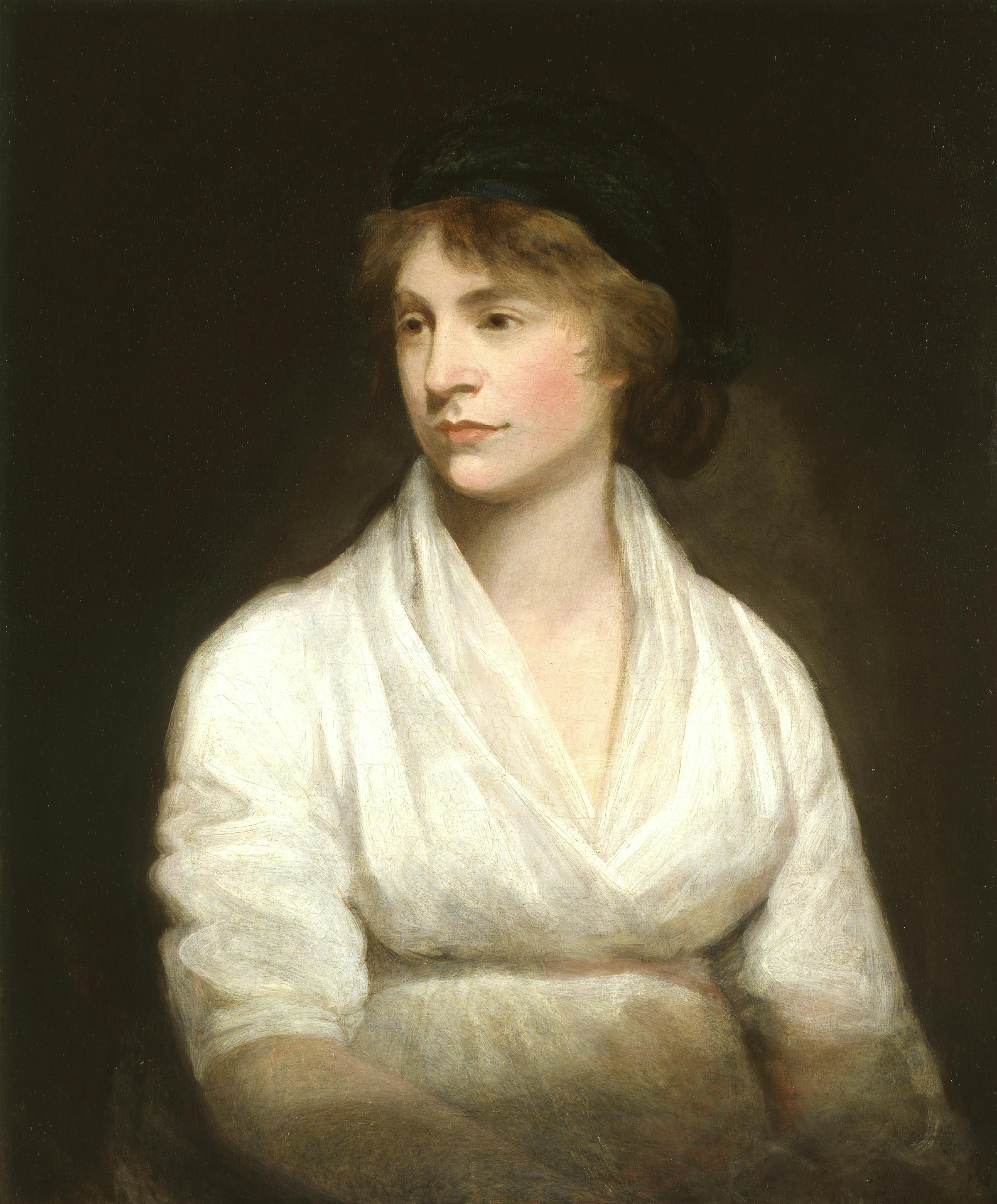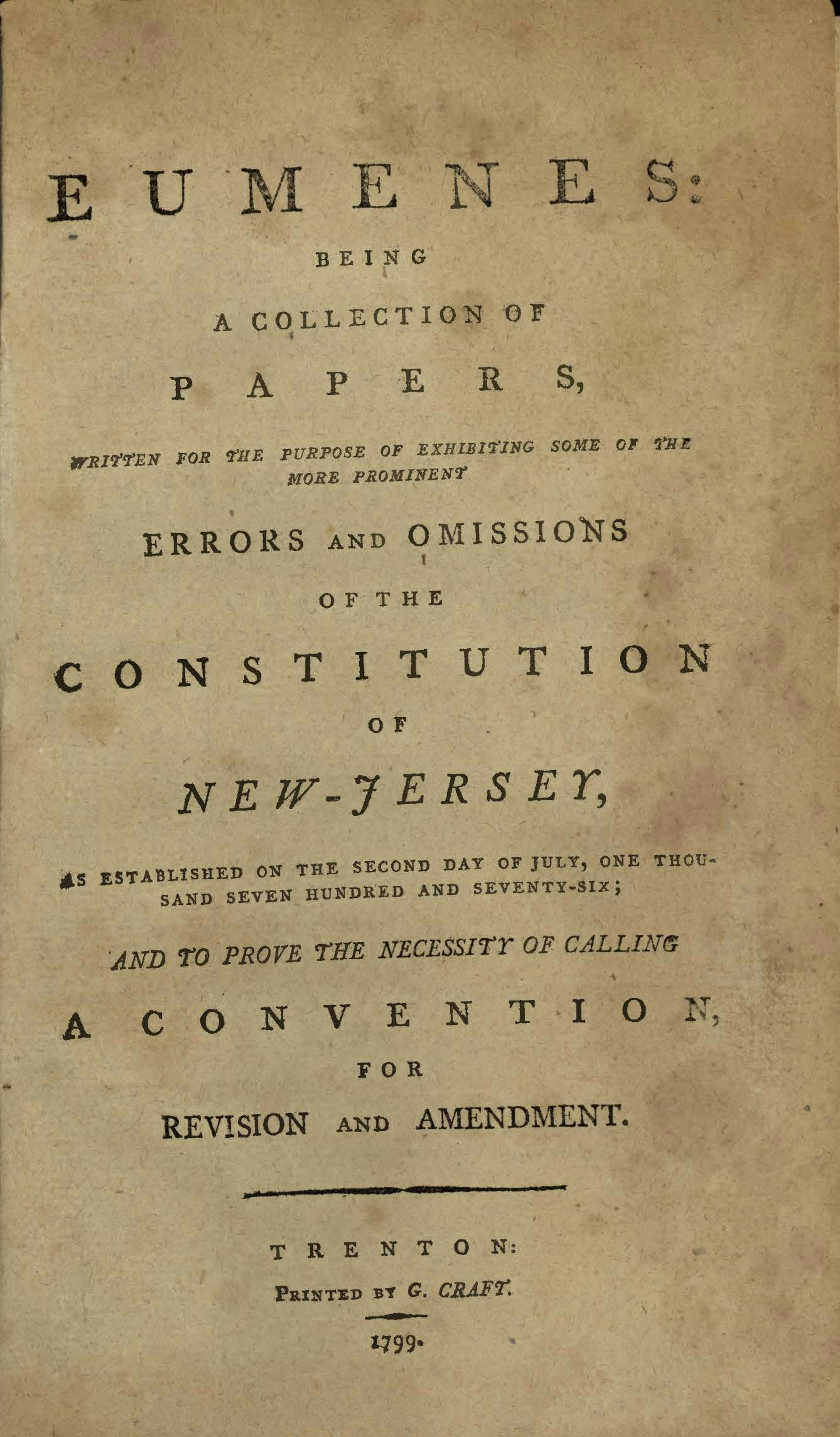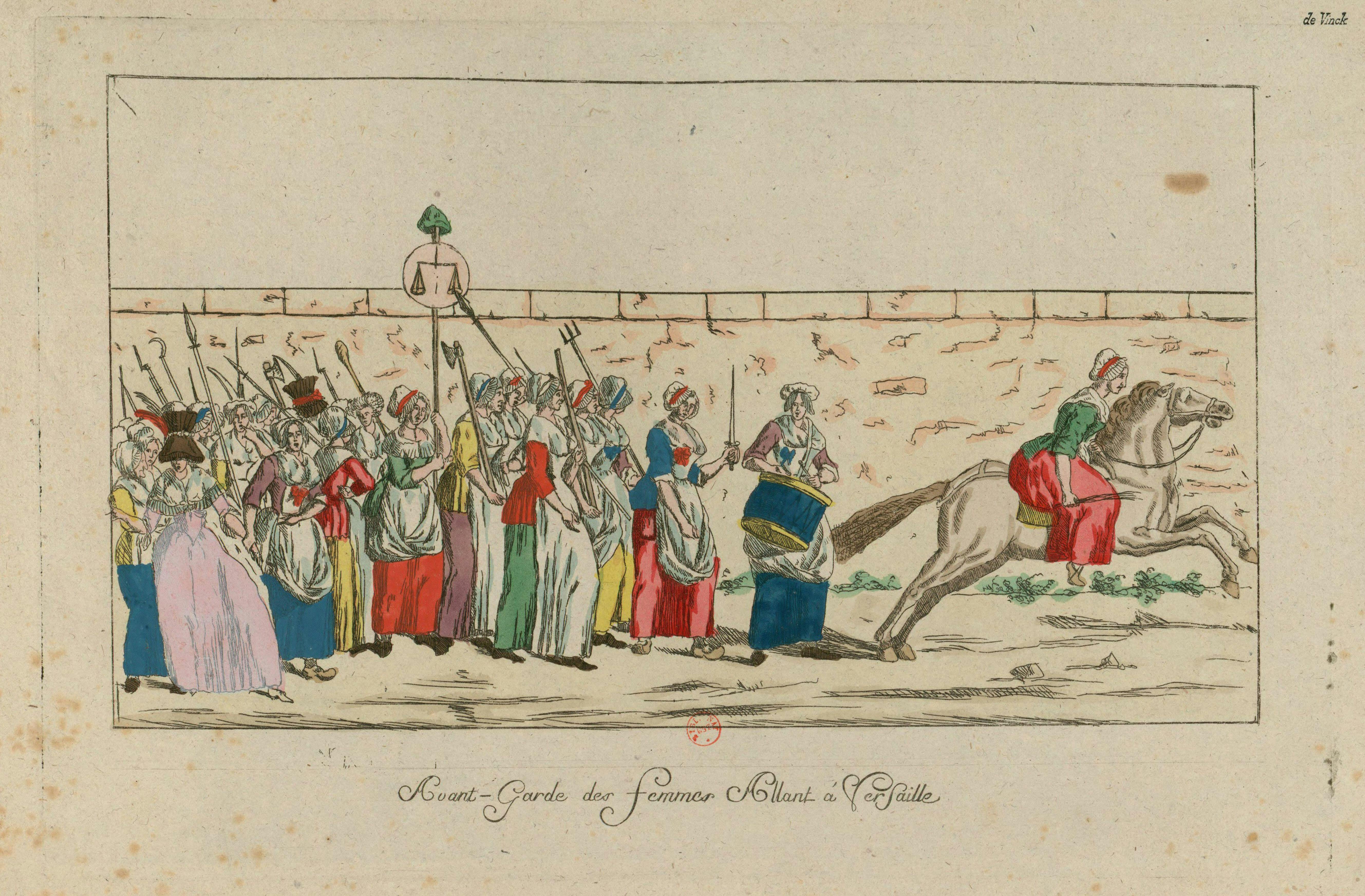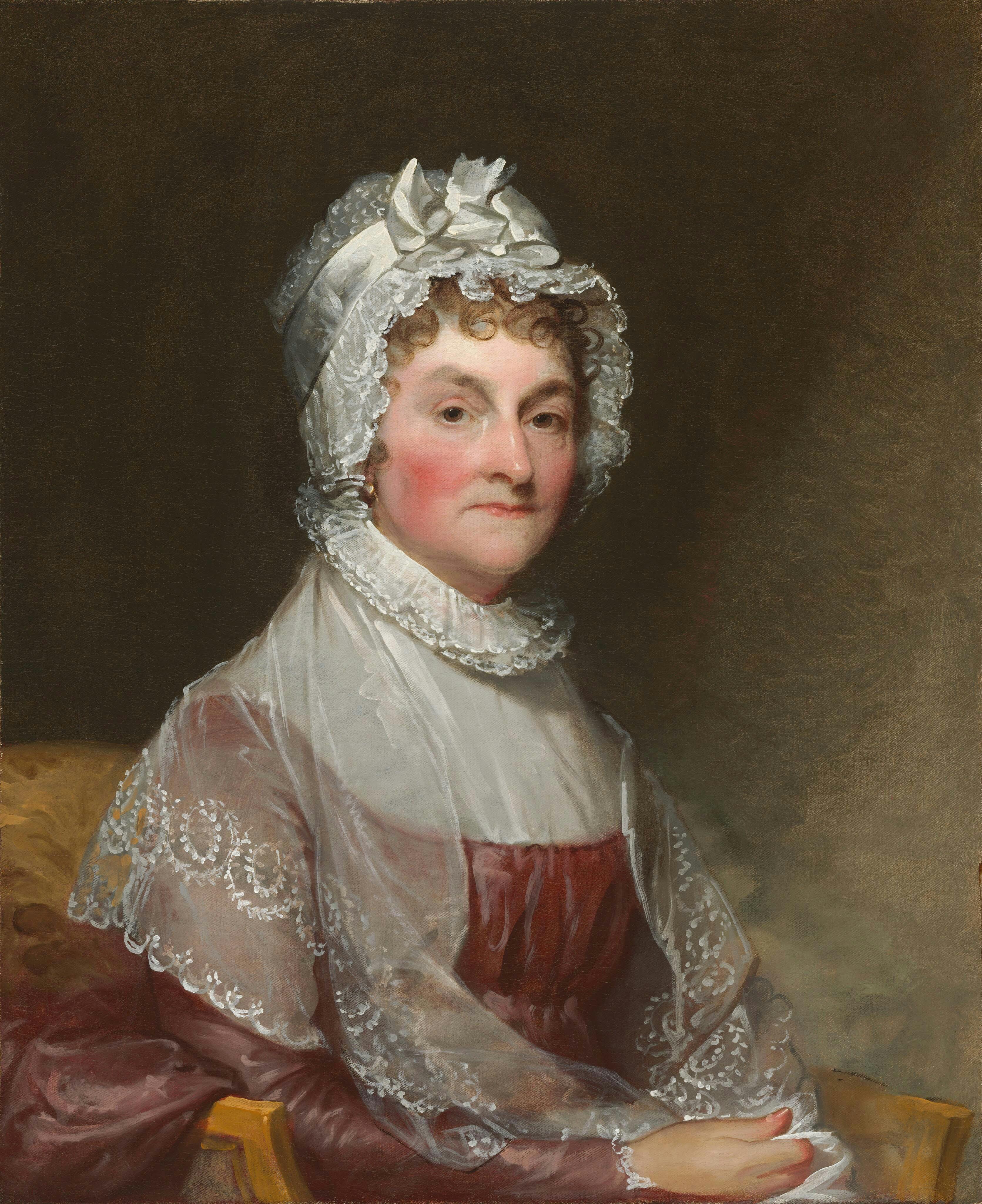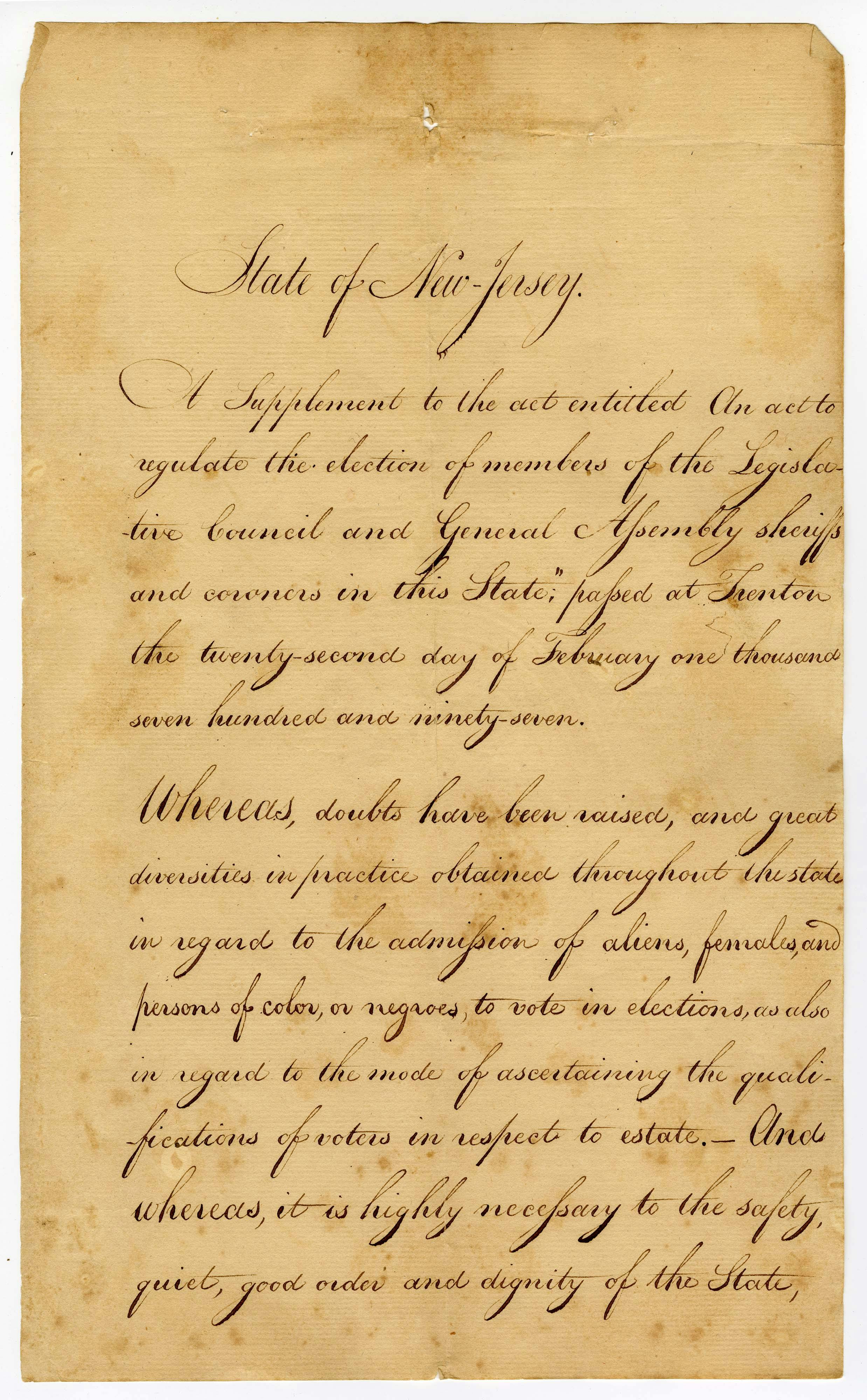How Did Women Lose the Vote?
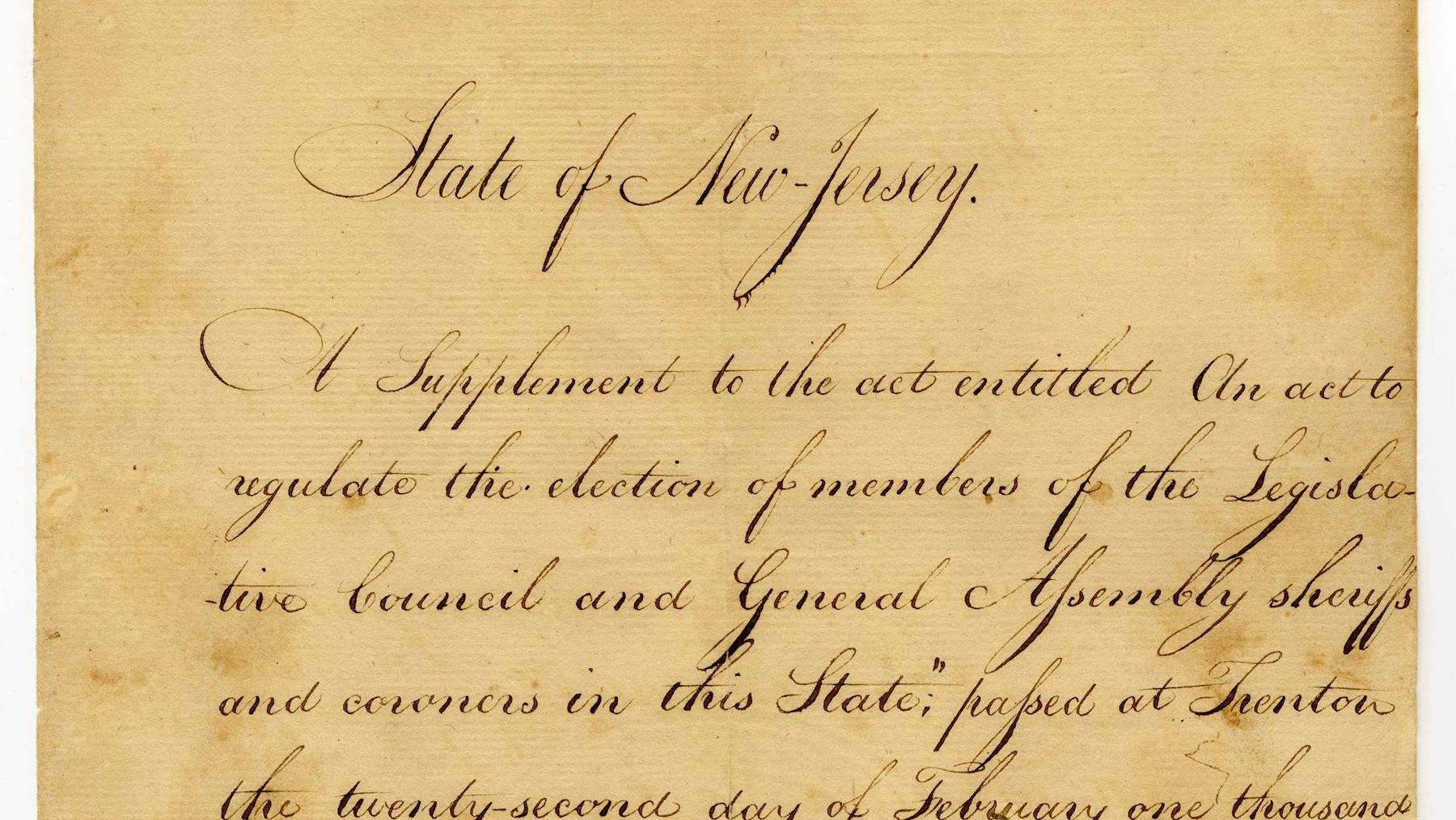
Reinterpreting the New Jersey Constitution
After nearly three decades of New Jersey’s distinctive Revolutionary experiment, its Constitution seemed to be in crisis. The 50-pound property requirement was increasingly unenforceable. It was hard to tell who met it and some towns chose not to enforce it. Without an effective property requirement, charges that property-less people were casting ballots arose, including itinerant laborers and “aliens” from other states or countries, married women, and enslaved people. Newspaper editorialists and politicians argued that the 1790 and 1797 laws had misinterpreted the intent of the 1776 New Jersey Constitution and that it was never meant to allow such an inclusive vote.
Yet the decision to exclude women and people of color happened for complex reasons that went well beyond these voting irregularities. Five factors contributed to the reasons why the state expanded the vote for white men while contracting it for women and people of color: the rise of partisan politics, regional controversies within the state over slavery, voter intimidation at the polls, fear of foreign influence, and a “backlash” against women’s political gains.
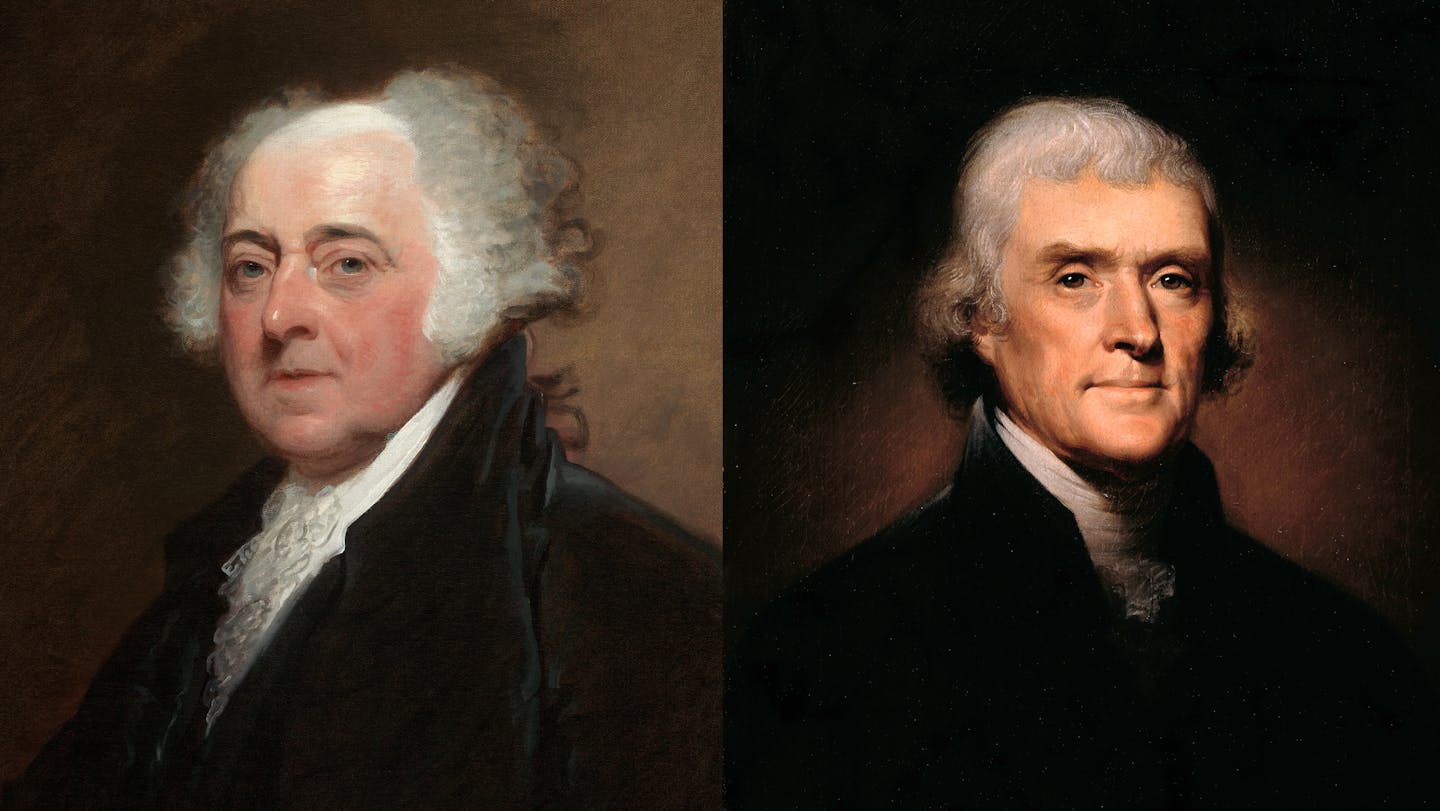
The Rise of Partisan Politics
The 1790s saw the emergence of America’s first national political parties, the Democratic Republicans and the Federalists. Parties were not yet accepted as having a legitimate role in American politics, and many feared that partisan rivalries would destroy the new nation. Partisan distrust, editorial wars in newspapers, and accusations of voter fraud got a jump start from the controversies surrounding the 1800 presidential election in which Democratic-Republican Thomas Jefferson narrowly defeated Federalist incumbent John Adams. Though Jefferson had won at the national level, New Jersey had voted Federalist.
New Jersey supported Adams in 1800, but over the next three years the Democratic Republicans began to dominate elections. The change began in 1797, the same year that township voting laws and the elimination of “clear estate” as part of the property requirement expanded the electorate. The combination of rising partisan rancor and the increasingly inclusive elections sparked accusations of fraud and charges of campaigning among those unqualified to vote, or manipulating groups assumed to be poorly informed.
Over the next decade, members of both parties sought votes from women, people of color, “aliens” and people who did not meet the property requirement. A growing partisan press implied that these appeals gave some politicians inappropriate influence, and even that it encouraged corruption and fraud.
Both sides deployed prejudiced ideas that women and people of color were easily manipulated or controlled to cast the other party as illegitimate. One editorial, for example, suggested that women’s votes gave the handsome Federalist Alexander Hamilton an unfair advantage over his opponents, while another asserted a Jeffersonian-Republican candidate for governor effectively voted multiple times by bringing all the women in his household eligible to vote to the polling place.
In this way, the partisan political system fueled suspicion and hostility toward New Jersey’s relatively inclusive democratic experiment.
(Left) John Adams, National Gallery of Art, Gift of Mrs. Robert Homans
(Right) Thomas Jefferson, White House Collection/White House Historical Association
[Hamilton and Senator Matthias Ogden] so ingratiated themselves in the esteem of the Federal ladies of Elizabeth-town and in the lower parts of the state…as to induce them (as it is said) to resolve on turning out to support the Federal ticket in ensuing elections.”
Centinel of Freedom, December 16, 1800In 1804, a Federalist newspaper attacked Governor Joseph Bloomfield for bringing “all the females in his house entitled to vote” to the polls to help him clinch the 1803 New Jersey election. Did Bloomfield bring his wife, Mary McIlvaine Bloomfield, to vote? We cannot be sure, as poll lists from that election have not been found for their township. However, even the same opposition newspaper admitted it was the “right” in New Jersey of some women to vote.
[Governor Joseph Bloomfield was accompanied by] that part of his female household entitled to vote.”
Federalist Gazette, January 9, 1804
Voter Intimidation
Accusations of both voter fraud and voter suppression grew after the Revolutionary War. But were these accusations legitimate? Why was the solution to take the vote away from women, people of color, and recent immigrants?
Between 1783 and 1808, The New Jersey Legislature received 73 petitions to investigate these accusations (36 charging fraud and 37 charging suppression).
Most petitions citing voter suppression were submitted to the legislature before the implementation of township voting in 1797, which vastly expanded the number and local control of polling places. Petitioners charged that voters, particularly in rural townships, did not have proper access to polling places or elections. They requested an alteration to the election law that ensured all townships had fair voting procedures and regulated and accessible election times and locations.
Petitioners claiming voter fraud sometimes claimed that male voters were disguising themselves in wigs and women’s clothing to vote multiple times. But most blamed disputed elections on judges and poll inspectors, who they claimed worked on behalf of a particular candidate or party, or had allowed married women, enslaved people, or recent immigrants to vote illegally. Some editorialists charged that poorly written laws provided poll inspectors with little help in verifying a person’s right to vote — that it was too difficult for inspectors to determine if a woman was married or single or if a Black person was enslaved or free.
Poll inspectors also had their own conflicts of interest. They were locally elected at town meetings by a vote of all male taxpayers. Some of these voters could not legally vote for county, state, or federal officers. Poll inspectors had a difficult time turning them away without compromising their own election.
The 1807 law claimed to simply seek a “uniform practice” and to “avoid all questions in regard to the qualification of the voter as to estate.” But by making all white male taxpayers eligible and excluding everyone else, it effectively scapegoated women, people of color, and “aliens” for all the state’s voting irregularities.
“Women Voting in New Jersey Toward the Close of the Last Century from an Old Illustration”, Image from the collections of and digitized by the University of Minnesota Libraries.
The Museum of the American Revolution Index
-
73total number of petitions to the New Jersey State Legislature from 1783 - 1808 citing voter fraud or voter suppression
-
36number of petitions to the New Jersey State Legislature from 1783 - 1808 citing voter fraud
-
37number of petitions to the New Jersey State Legislature from 1783 - 1808 citing voter suppression
-
18number of petitions to the New Jersey State Legislature from 1802 – 1808 citing voter fraud (1 petition citing voter suppression)
-
1number of overturned elections in New Jersey from 1783 to 1807
-
13number of polling places in New Jersey in 1790 (1 polling place per county)
-
208maximum number of polling places in New Jersey by 1798 (a possible 2 per township)
Women vied with men, and in some instances eclipsed them, in ‘stuffing’ the ballot box.”
Centinel of Freedom, March 22, 1803.
1802: Rising Accusations of Voter Fraud
One of the most disputed charges of voter fraud occurred after an election in 1802.
Multiple petitions to the New Jersey State Legislature charged that extensive voter fraud had recently occurred in the election of state representatives at polling places in Maidenhead (now Lawrenceville) and Trenton.
Residents charged that many ineligible people had voted, including married women, enslaved people, non-residents, people who did not meet the property requirement, and “citizens of Philadelphia.” They also charged that poll inspectors had accepted proxy votes and even left the polling place unattended to take ballots from people in the streets. The legislature was unconvinced by these charges, saying that some were unproven while others described practices that had become customary.
Petition of Voter Fraud, New Jersey State Archives, Department of State
…the judge and inspectors admitted many persons to vote who were not by law entitled to that privilege…persons underage—persons who had not resided in that township…a numerous body of Negroes…some of whom are actually slaves…Citizens of Philadelphia…married women…and even went so far as to allow votes to be given by proxy.”
1802 Petition, Maidenhead TownshipThese surviving objects demonstrate the challenges that the state faced to ensure that citizens could vote freely and fairly.
Voters cast their ballots into armored ballot boxes like this one. In the 1790s, growing fears of election fraud made the state require these locked boxes.
...about a foot square with a lid on the top, fastened with brass or iron hinges and with two locks and keys thereto of different sizes and constructions, and an opening wide enough to fit one ballot at a time.”
1797 Election Statute, New Jersey State Constitution
How Did Presidential Elections and the Electoral College Work in Early New Jersey?
As stated in the 1787 US Constitution, decisions regarding the electoral college were within each state’s jurisdiction.
From 1789 to 1800, US Presidential elections in New Jersey were determined by the state legislatures, who voted for electors for the electoral college (New Jersey had seven electors and these electors voted for president). In both the 1796 and 1800 elections, all seven electors unanimously voted Federalist, for John Adams.
In 1804, the legislature changed the basis by which electors were decided in New Jersey. After that year, a popular vote determined those eight electors, who then became the state’s electors for that election. In 1804, all eight electors voted Republican, for Thomas Jefferson.
The state continued to implement a popular vote for electors, except in 1812.
A New Display of the United States, Library of Congress Prints and Photographs Division Washington, D.C, Reproduction Number: LC-DIG-ppmsca-15716
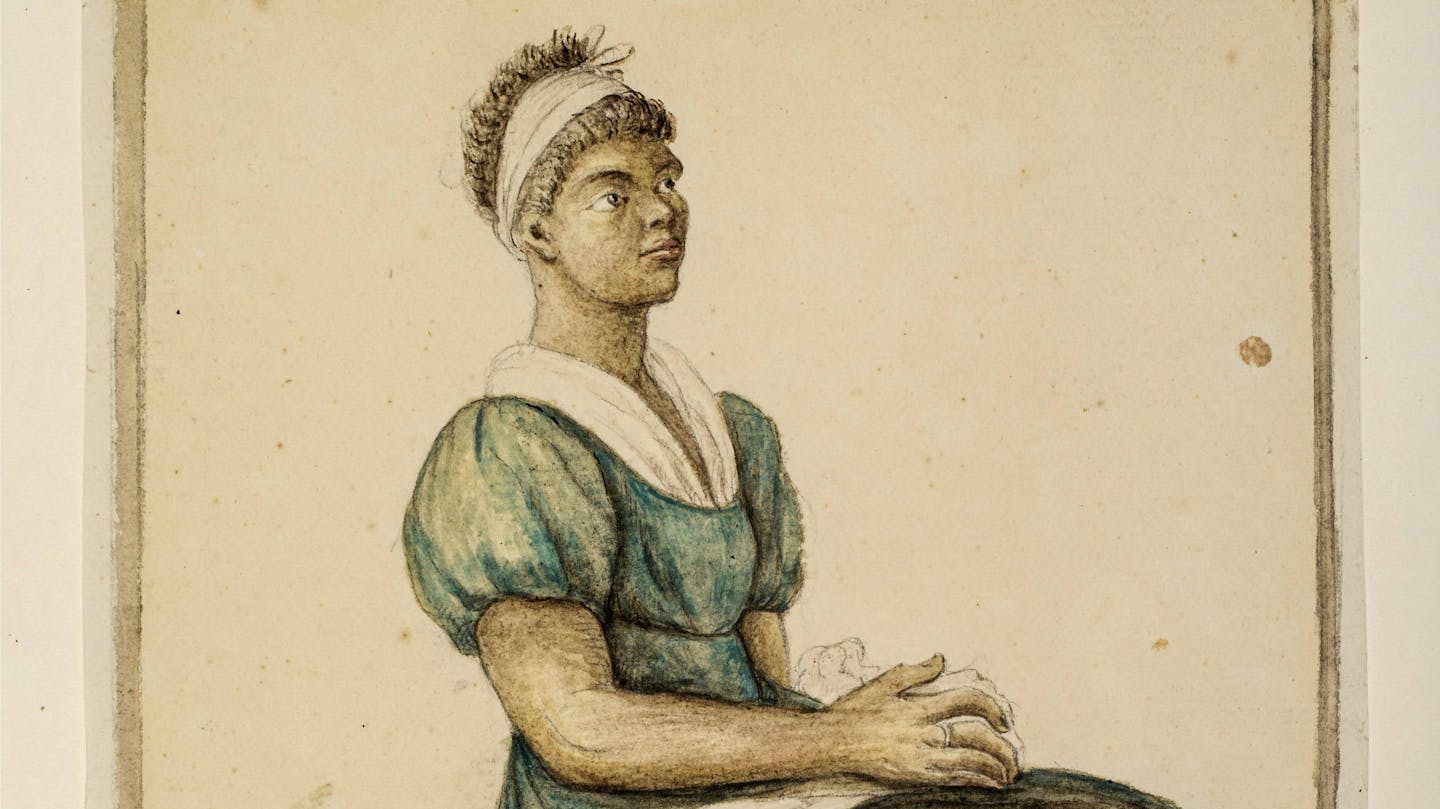
Gradual Abolition of 1804
New Jersey became the last northern state to pass a gradual abolition law and abolish slavery with passage of the Act for the Gradual Emancipation of Slavery in 1804.
While West Jersey Quakers backed gradual emancipation, East Jersey slaveholders in the state discredited the Act, arguing it was part of a Quaker plot to maintain control of the state legislature and give more Blacks the vote.
But on the ground, antislavery sentiment gained traction across New Jersey in the 1790s with the help of efforts by the New Jersey Society for Promoting the Abolition of Slavery. By the election of first Democratic-Republican Governor and antislavery advocate Joseph Bloomfield in 1803, the legislative majority in the state, composed of both Republicans and Federalists, embraced a plan for gradual abolition.
While New Jersey passed gradual emancipation, it did little to improve the free Black population’s economic and social conditions, including limiting the franchise to white, property-owning men in 1807.
The fight to achieve a gradual abolition act further weakened the regionally divided Democratic-Republican Party to such a great extent that the party began to encourage actual voter fraud to maintain its control over the state. After one particularly overt case over the location of a courthouse in 1807, the legislature decided to answer the decade of calls for a revision to the New Jersey Constitution by stripping the vote from women and people of color that same year.
Anne-Marguérite-Joséphine-Henriette Rouillé de Marigny, Baroness Hyde de Neuville, Martha Church, Cook in “Ordinary” Costume; verso: study of a child, ca.1808-1810, watercolor, graphite, black chalk, brown and black ink, and touches of white gouache on paper; graphite. Purchase, New-York Historical Society, 1953.276. Photography © New-York Historical Society, http://www.nyhistory.org.
New Jersey banned the importation of slaves in 1786. But slave populations in East New Jersey grew over the 1790s, though they were concentrated in certain northern counties like Monmouth, Bergen, and Somerset. Somerset was home to nearly 2,000 enslaved people in 1790 and only 147 free people of color. By 1800, there were 12,422 enslaved people in New Jersey.
Organizations like the New Jersey Society for Promoting the Abolition of Slavery, founded in 1793, lead the state’s effort to pass gradual emancipation.
New Jersey’s Gradual Abolition Act in 1804 declared children born to enslaved women after July 4, 1804 to be “free” after reaching the age of 21 for women, and 25 for men. Although those enslaved before the passage of the Act would remain enslaved for the remainder of their life, thousands of enslaved people would be freed under the new law in the next 20 years.
Gradual Abolition and the Democratic-Republican Party
In 1804, the same year as the adoption of the Gradual Abolition Act in New Jersey, the state Democratic-Republican Party split into two factions: a moderate faction and a liberal one. The split seems to have owed in part to the Gradual Abolition Act, and it led indirectly to the statute stripping women and people of color from the vote three years later.
The break in the party resulted from internal pressures within the state legislature, particularly from Democratic Republicans from southern New Jersey Quaker counties who wanted to pass their Gradual Abolition Act. In an effort to keep their party unified, northern Democratic Republicans, who benefitted from the institution of slavery, went against their own self-interest and supported passage of the Act.
The new moderate part of the party supported strengthening the property requirement, while the liberal Republicans argued that “every person” is a “member of the community, and has an undoubted right to vote for public office.” Both sides increasingly referenced the vote as a right that separated “slave” from free person.
Meanwhile, the population of free people of African descent in New Jersey had doubled in the previous ten years, presenting a threat to the familiar racial order on which these northern white slave owners relied. By demanding their support, abolitionists among the Republicans seem to have driven northerners to form a new party.
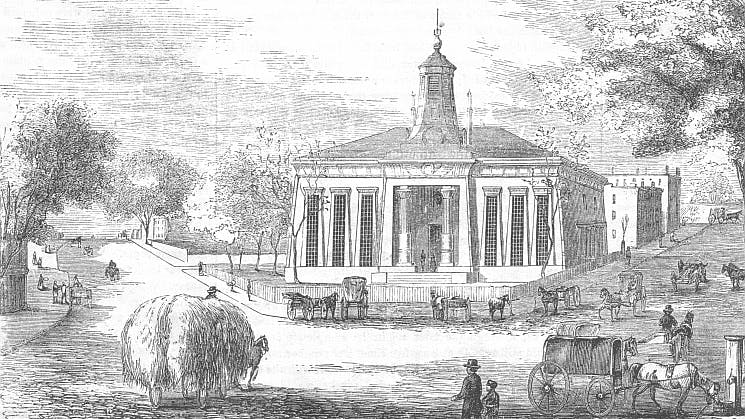
The Courthouse Fight of 1807
In February 1807, an election over where to locate a courthouse in the staunchly- Republican Essex County pitted liberal northern and moderate southern Democratic Republicans against each other. Both sides broke the rules and recruited people to vote who were not eligible. Significantly more ballots were cast than there were eligible voters in the county, and anger over the obvious fraud drove a deeper wedge into the Democratic-Republican Party just as it faced a new presidential election cycle in 1808.
To avoid a breakdown of the party and a collapse in the legitimacy of elections, the Democratic Republicans scapegoated women and people of color for the voting irregularities and overturned the election law in 1807.
Newark Courthouse., Image courtesy of NewJerseyAlamanac.com.
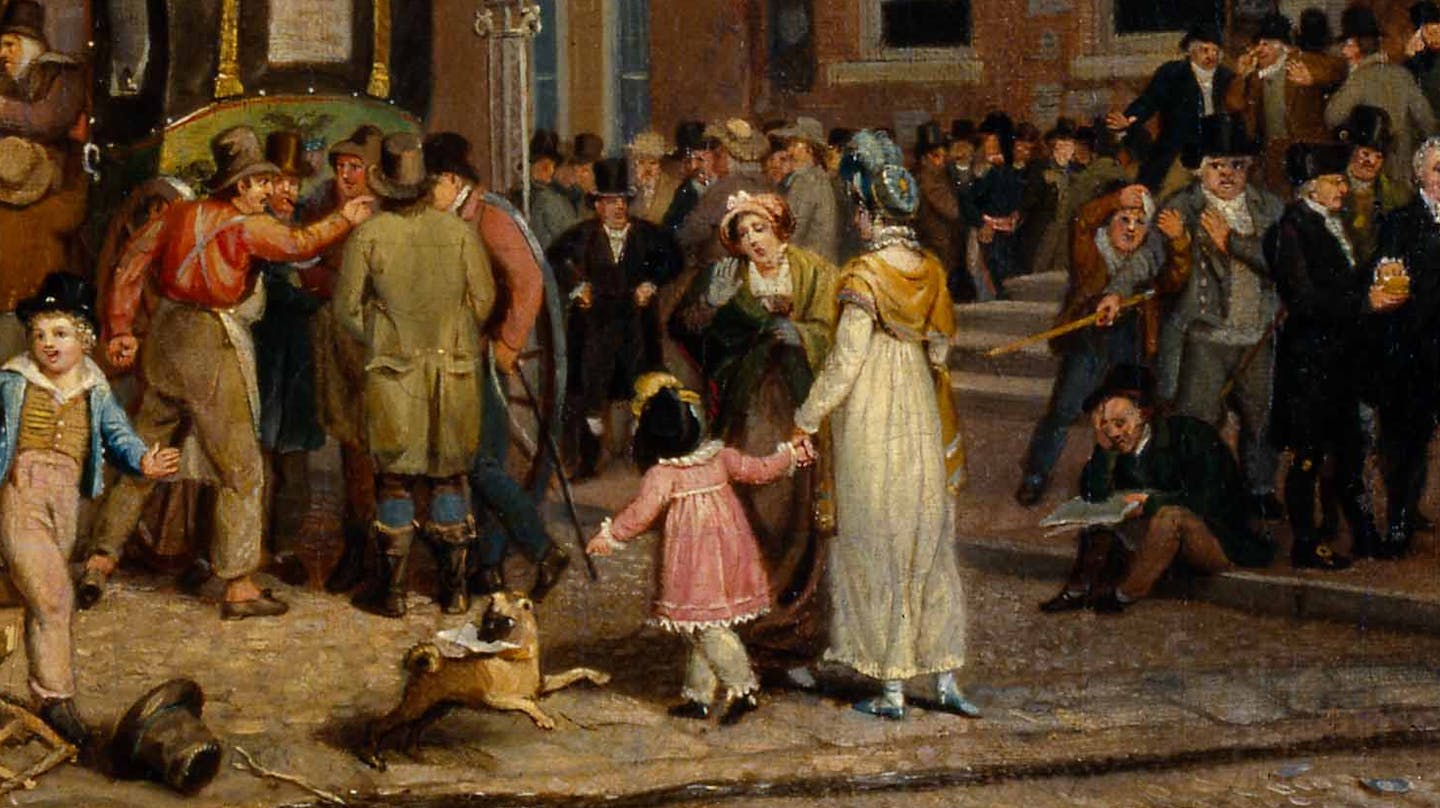
A Backlash Against Women
Women’s loss of the vote in New Jersey was the consequence of a larger “backlash” against women’s political gains that occurred in the Early Republic.
As women became increasingly politicized, both with the new “rights language” and by their growing recruitment as voters by political candidates, some began to see them as a threat to male authority, social and political stability, the gender status quo, and possibly the legitimacy of the new American experiment.
Some believed women’s rights advocates, “female politicians,” and women voters in New Jersey reached a point of influence that, unlike their service in the Revolutionary War, was no longer for the good of the nation. Rather, these women were seen to pose a fundamental threat to the political order.
Election Day in Philadelphia (Detail), Museum purchase with funds provided by Henry Francis du Pont, 1959,0131 A, Courtesy Winterthur Museum
The Partisan Press Satirizes Women Voters
The debate over women voting sparked charges that revealed popular beliefs about women’s self-control and sexuality that would be repeated throughout the next 200 years.
Partisan newspapers raised prejudices and energized contemporary stereotypes about women, people of color, and “alien” immigrants from Europe and elsewhere.
Coverage of women voters was wide and varied. Some papers portrayed women voters as “petticoat electors,” implying they may have been older, or mindless pawns of male candidates. Others described women voters as “Wollstonecraftians,” after British feminist thinker Mary Wollstonecraft, suggesting their radicalism and potential to bring the chaos of Revolutionary Europe to America. These satirical depictions branding women voters “dangerous” stoked fears that women in New Jersey had the ability to tip the scales of partisan power.
Some newspapers dismissed women voters as “petticoat electors,” a reference to their skirt-like garment covering from their waist to their shoes. Though still a popular garment, the petticoat was old fashioned compared to the neoclassical garments that came into vogue in the 1790s. The phrase was meant to diminish women like this as inexperienced at politics.
Although reinforced by the petticoat band, True Republican valor they could not withstand, And of their disasters in triumph we’ll sing, For the petticoat faction’s a dangerous thing.”
Centinel of Freedom, October 23, 1798...believers in the democratic Wollstonecraft’s ‘Rights of Woman,’ turned out in support of their favourite candidates...”
The Bee, October 25, 1797Some editorials described women voters as “Wollstonecraftians,” after Mary Wollstonecraft, a European feminist associated with Revolutionary ideas. Many Americans associated these new ideas with the neoclassical, or “antique” style of dress. It did not require a petticoat to be worn underneath it, making the gown appear more modern than those of the mid-1700s. “Wollstonecaftian” women represented the opposite danger that papers attributed to women voters from those of “petticoat electors” — that women were more radical than men.
...it is evident, that women, generally, are neither, by nature, nor habit, nor education, nor by their necessary condition in society, fitted to perform this duty with credit to themselves, or advantage to the public.”
William Griffith, “Eumenes,” 1799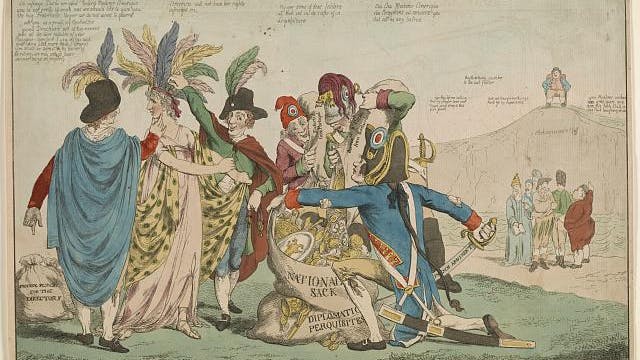
Fears of Foreign Influence
France, Haiti, and Ireland experienced Revolutions in the 1790s. And like the American Revolution, each of those Revolutions inspired and emboldened women to participate politically in unprecedented ways. But many Americans, particularly Federalists, did not portray these women — for instance the Citoyenne of the French Revolution — as accomplished or Revolutionary. Rather, they labeled these women as counterrevolutionaries and denounced them as unnatural women.
Stoked by fears of foreign influence, partly influenced by political refugees from these other Revolutions living in America, Federalist President John Adams signed the Alien and Sedition Acts into law in 1798. These acts, passed in four parts, gave the President the power to imprison or deport “dangerous aliens,” and raised the citizenship requirement in the nation from 5 to 14 years, making it more difficult for foreigners to vote in the new nation. The Acts reflect the nation’s attempt to regulate immigrants and their rights, which had a direct impact on changing election laws in New Jersey.
The laws became widely unpopular and helped John Adams’s Democratic Republican opponents achieve electoral victories in state government after 1800. The effect of the controversies over these laws in eroding women’s political rights lasted much longer.
Property protected--à la Françoise, Library of Congress Prints and Photographs Division Washington, D.C, Reproduction Number LC-DIG-ppmsca-31156
For my part I would almost as soon have a host of infernals in my house, as a knot of these fiery frenchified dames — Of all the monsters in human shape, a bully in petticoats is the most completely odious and detestable.”
William Cobbett, Porcupine’s Gazette, July 27, 1798Depictions of “armed and dangerous” women participating in the French Revolution, like this one of women storming and Bastille, informed American perceptions of political women in the states as being aggressive and threatening to social order.
In response, many Americans, like Philadelphia editor William Cobbett, harshly criticized American women that adopted French fashion or political behavior.
The Stile of Dress...is really an outrage upon all decency...when this Lady has been led up to make her curtzey, which she does most gracefully it is true, every Eye in the Room has been fixed upon her and you might litterally see through her....[Most of the other ladies also] wear their Cloaths too scant upon the body, and too full upon the Bosom for my fancy…”
Abigail Adams to Mary Cranch, 1800Many American women adopted Parisian fashion trends in the 1790s, most popularly the neoclassical style gown, as a way to make their political voices heard. These “frenchified dames,” as they were labeled, were central to political life in the new nation.
But these fashion choices drew criticism from Federalists who feared the chaos of the French Revolution. Among these critics was Abigail Adams, who disapproved of clothing she believed made a pro-French political statement.
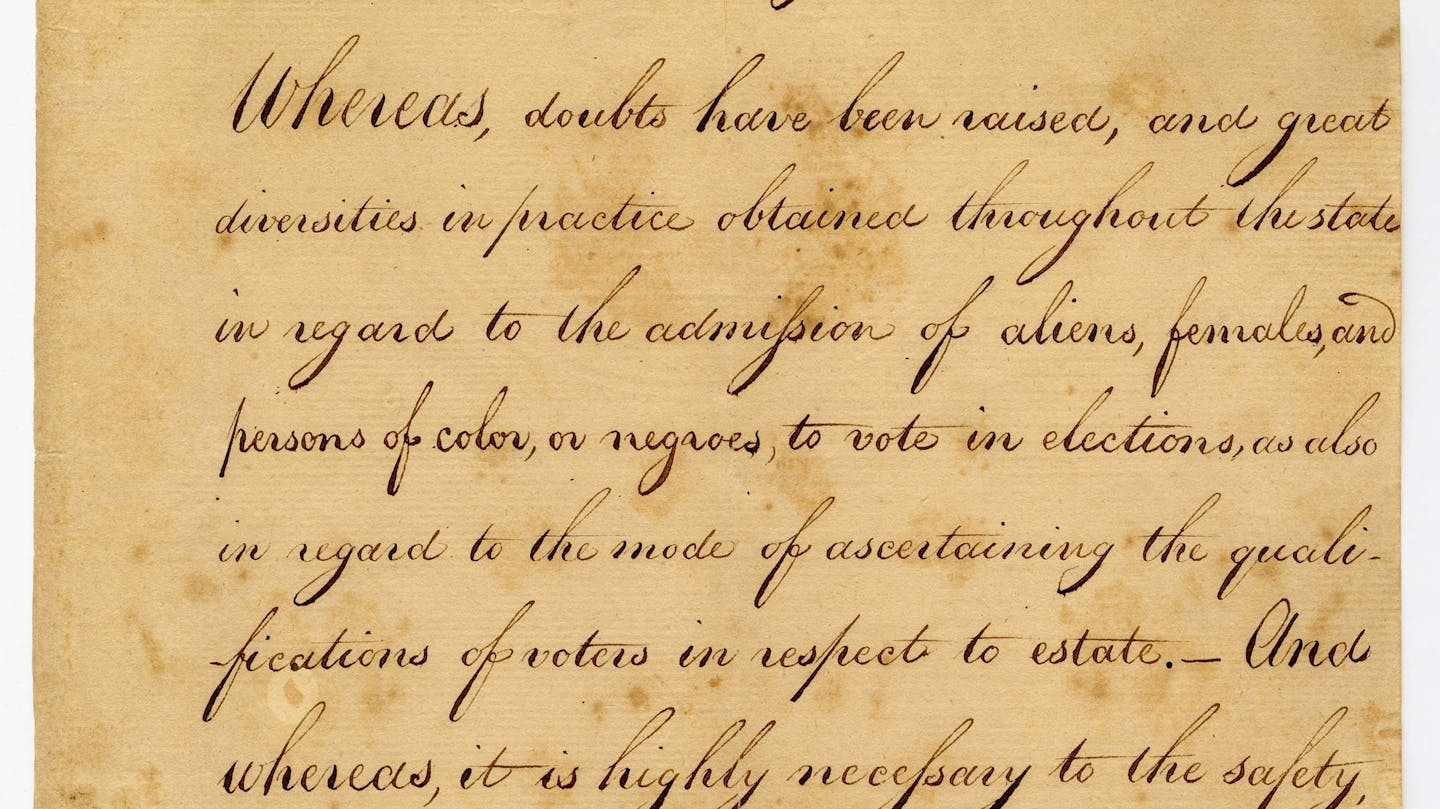
1807: Closing the Electorate
In 1807, politicians charged that the state’s inclusive voter laws encouraged illegal voting by unpropertied women and enslaved people. By unanimous vote, the state legislature adopted a new law stripping the vote from all women, “persons of color," and immigrants, but expanded the vote to include all white male taxpayers.
What do you think was the most important factor in prompting this backlash against New Jersey’s early experiment? Was this change in New Jersey inevitable, or could they have kept their democratic experiment going and continued expanding it?
Next, we look at how that experiment changed again in the following decades and generations.
Electoral Reform Enrolled Law, New Jersey State Archives, Department of State
Be it enacted…no person shall vote in any state or county election for officers in the government of the United States, or of this state, unless such person be a free, white, male citizen of this state…”
The New Jersey State Legislature, Acts of New Jersey, November 16, 1807Election bill met better fate, On every hand defended, To check confusion through the state, The female vote has ended.”
Trenton True American, November 30, 1807
